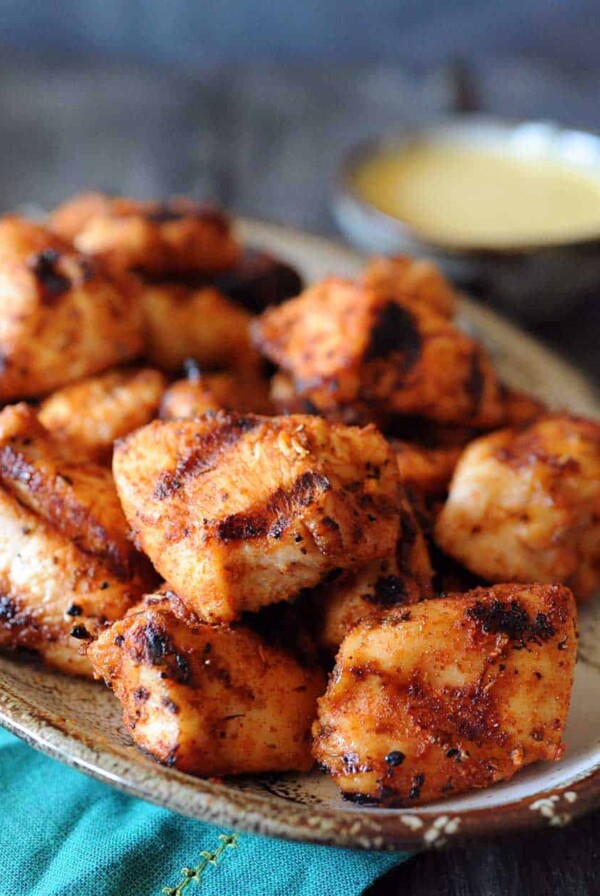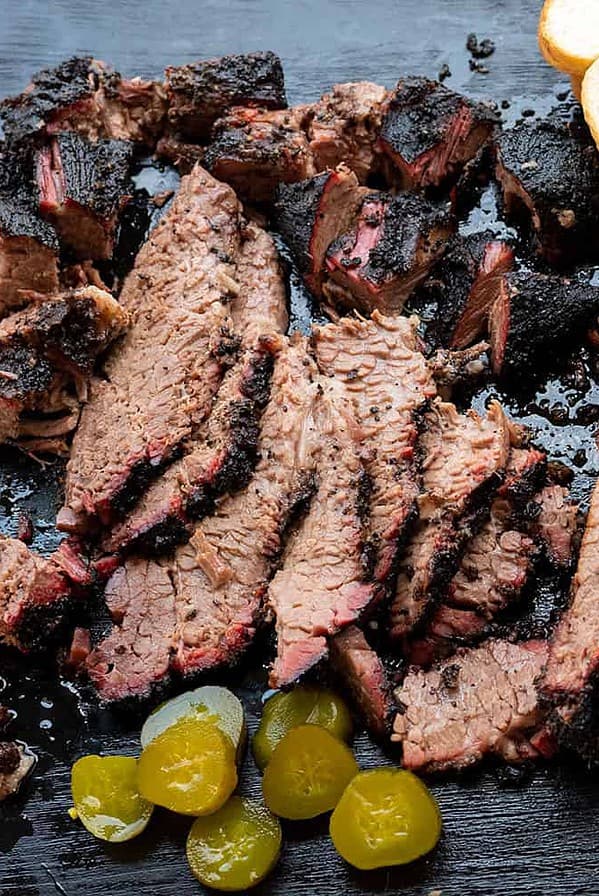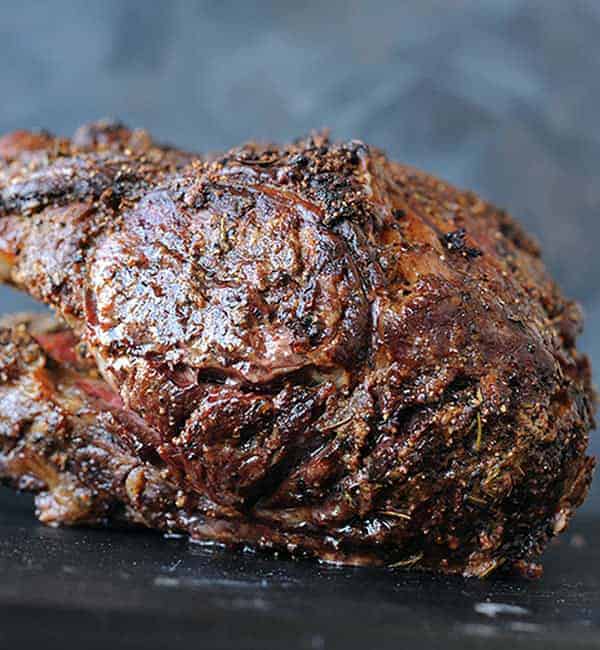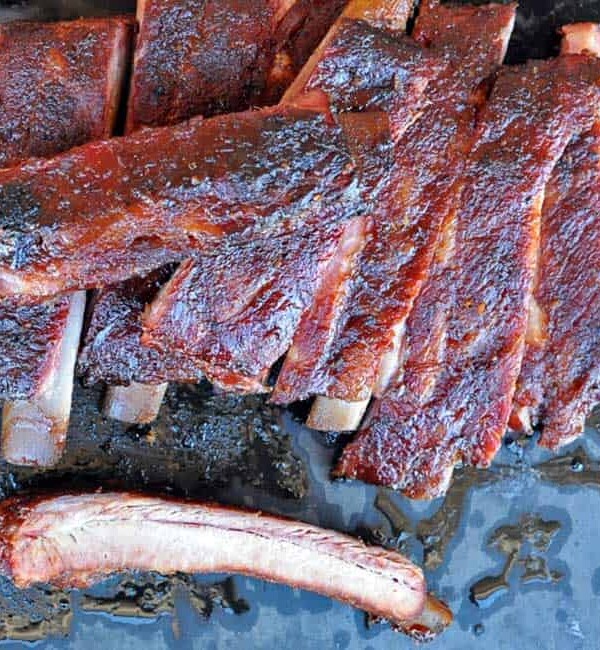This post may contain affiliate links which help support Girls Can Grill.
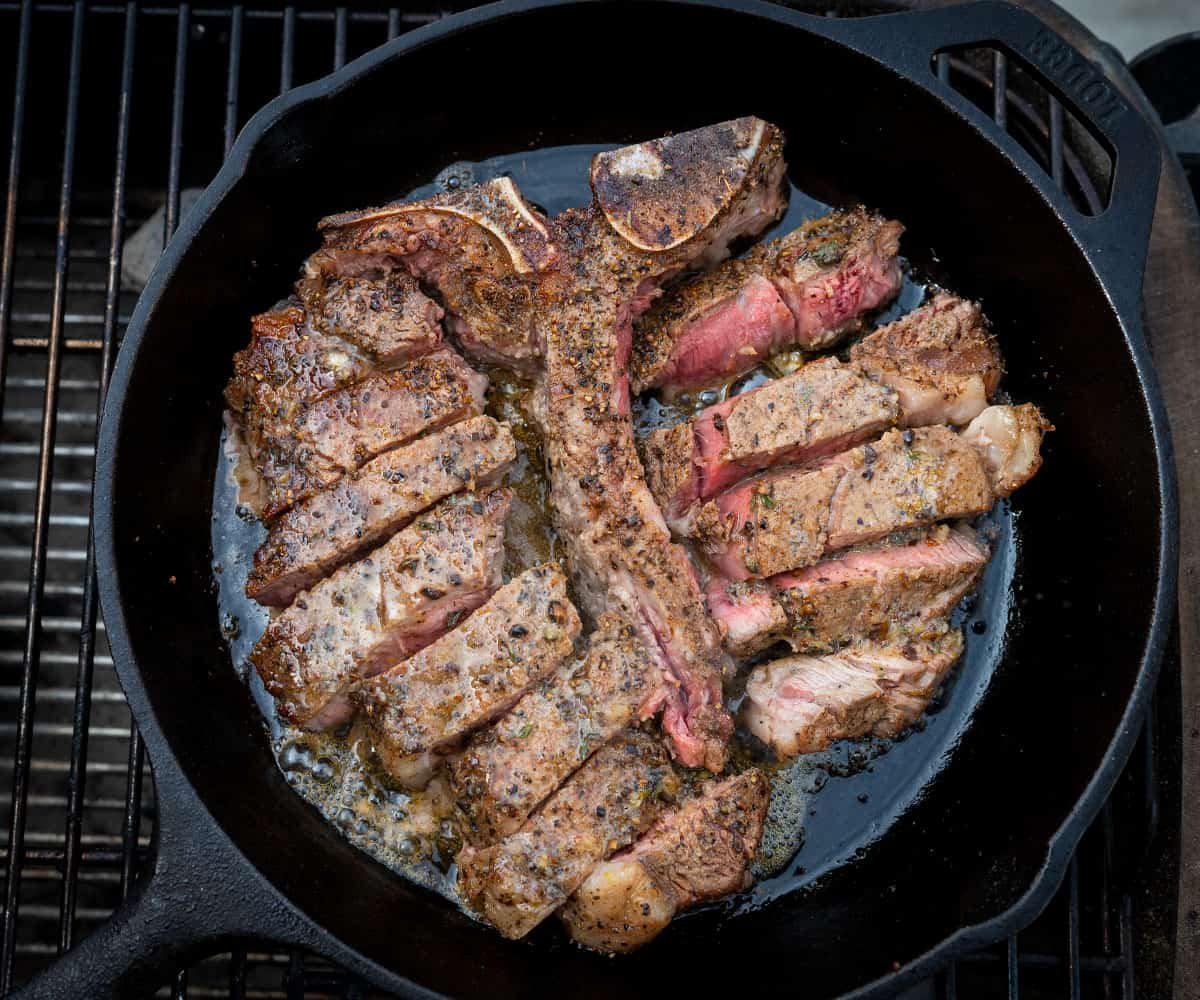
Save this BBQ Tip
Enter your email, and I’ll send this link directly to your inbox. Plus, you’ll get new BBQ recipes and tips weekly.
Ingredients
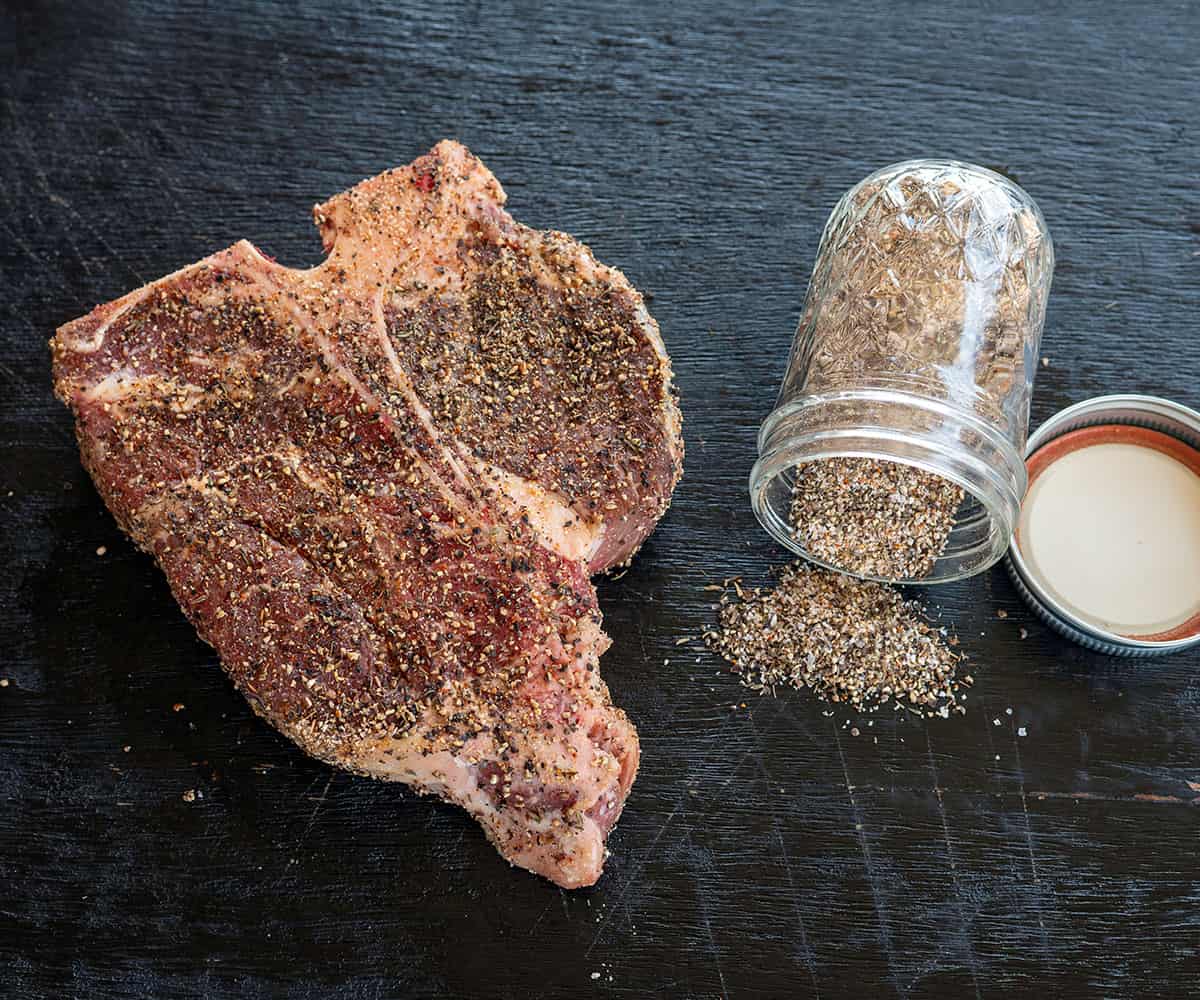
- Porterhouse Steak: For the best results, look for a steak that has a large filet. It should be about 1 1/2 inches thick and weight about 1 1/2 pounds per steak. I find good selections at Whole Foods and online. You can also talk to your local grocery store butcher about placing a special order.
- Steak Rub: The best steak rub combines kosher salt, black pepper, granulated garlic and a few other herbs and spices. My steak seasoning recipe works awesome with this recipe.
- Vegetable Oil: We’ll be searing the steak in a cast iron skillet. You need to use an oil with a high smoke point. Vegetable oil or canola oil are great choices. Avoid using olive oil.
- Ancho Garlic Compound Butter: The steak is finished with a luscious garlic compound butter that melts over every piece. Don’t skip this step.
Substitutions: You can follow this method and recipe for other T-bone and ribeye steaks, as well.
Equipment
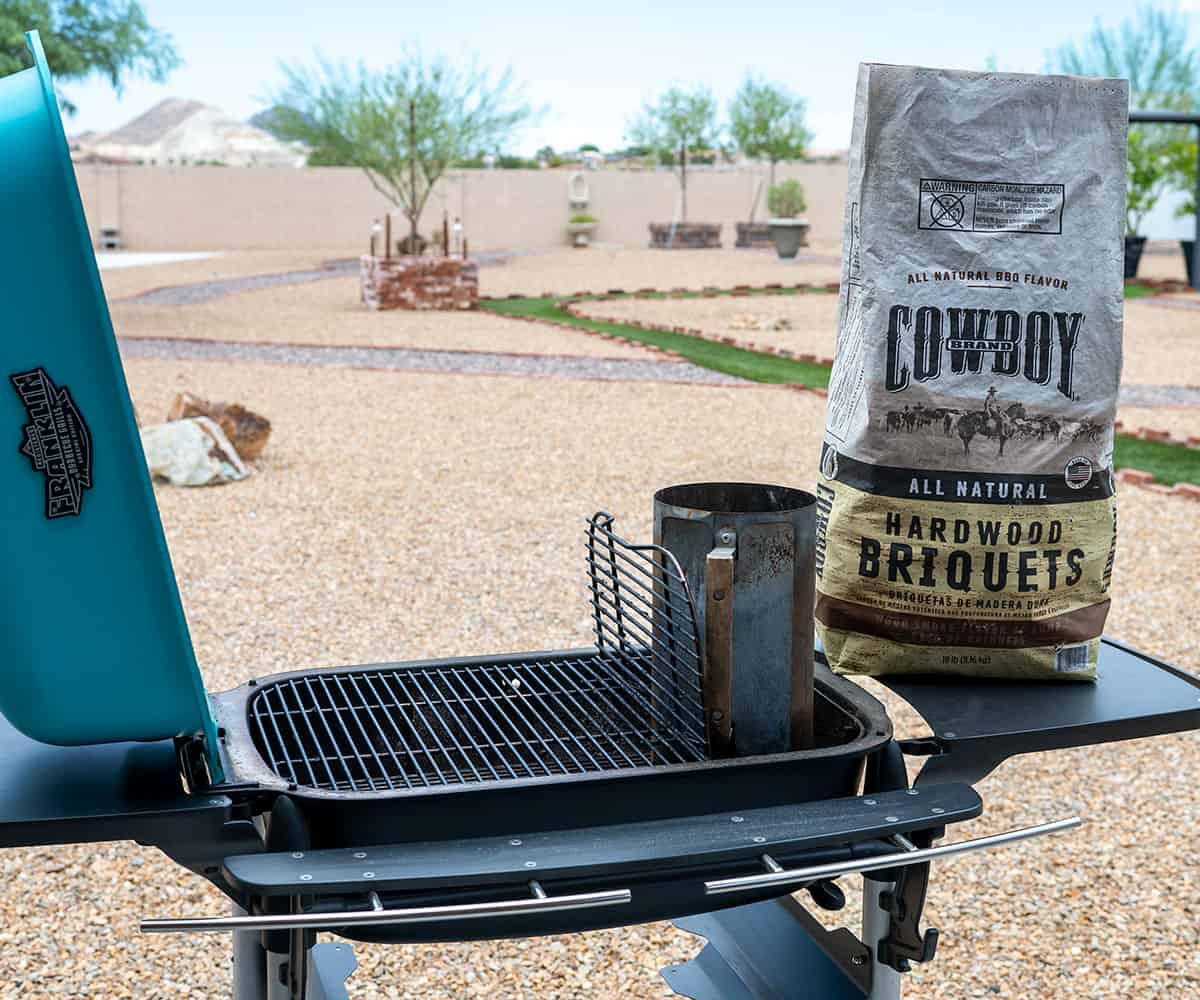
- Charcoal Grill: I’m using my PK Grill to cook the steak, but any charcoal grill will work. I’ll also explain later in the article how to cook this on other types of grills like a gas grill or pellet grill.
- Cowboy Charcoal Hardwood Briquets: Learn more about the difference between charcoal briquets and lump charcoal in my charcoal 101 articles.
- Thermometers: For this recipe, I recommend having a leave-in meat thermometer like a Thermoworks Smoke and an instant read thermometer, like the Thermapen ONE.
- Cast Iron Skillet: The last step in the cooking process includes searing the steak with compound butter. You’ll need a 10-12-inch skillet. Cast iron works best.

What is a Porterhouse Steak?
A porterhouse steak is a cut of meat from the short loin. It is made up of two muscles from the cow – the strip loin and the tenderloin. They are connected by a bone that is shaped like the letter T.
When the bone is removed, the strip loin is cut into New York strip steaks and the tenderloin is cut into filet mignon steaks. But together, they make a T-bone steak.
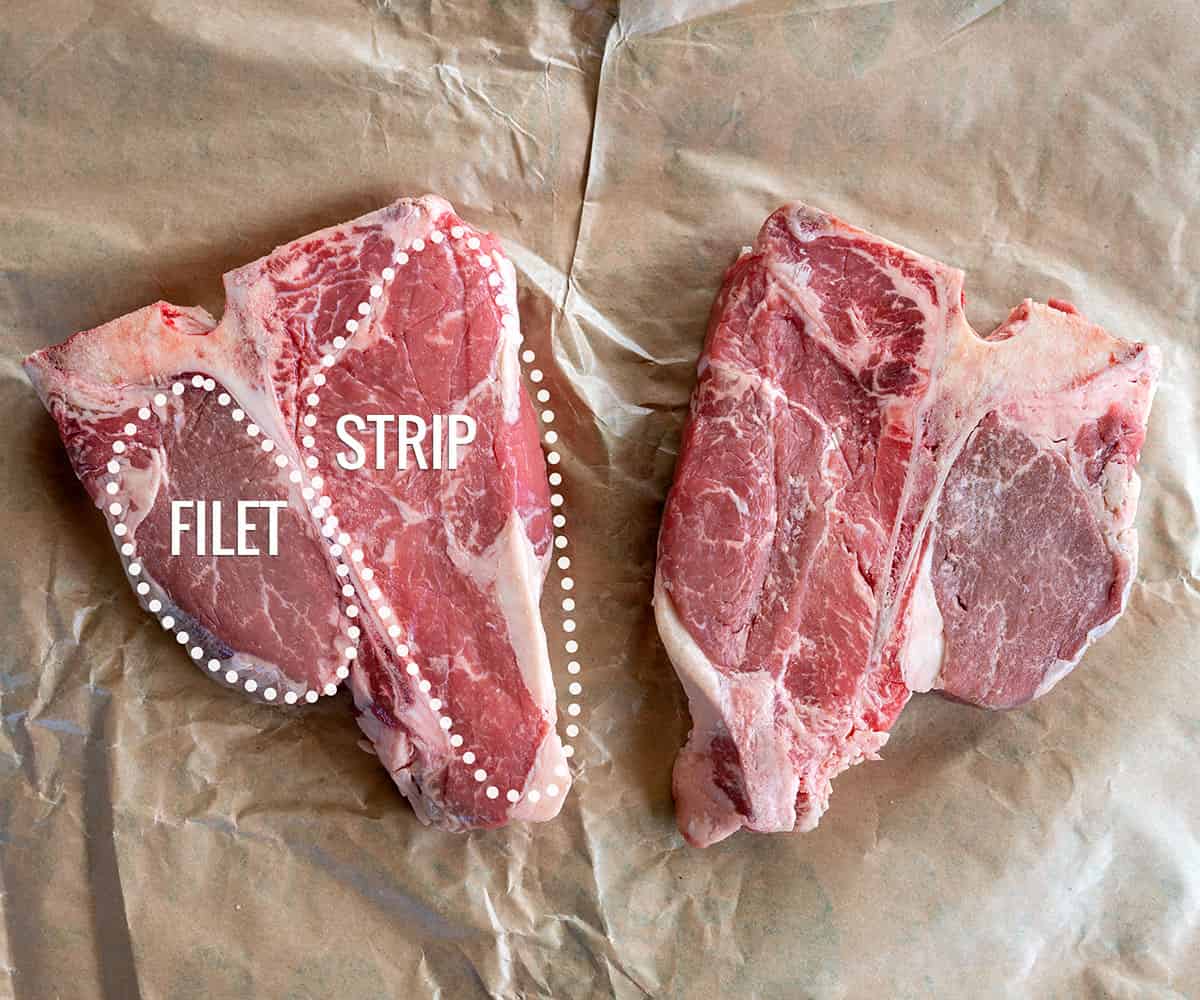
Porterhouse vs. T-Bone
As the tenderloin muscle nears the rib end of the cow, it tapers off, so that section of the short loin contains a smaller piece of tenderloin. The portion of the short loin that is closest to sirloin end of the cow has a much larger piece of tenderloin.
According to the North American Meat Institute’s Meat Buyer’s Guide, any steak cut from the short loin where the tenderloin measures at last .5 inches wide is considered a T-bone.
However, for a steak cut from the short loin to be considered a porterhouse, the tenderloin must measure at least 1.25 inches wide or more.
The tenderloin meat is more tender than the strip loin; therefore, I always look for T-bones that qualify to be called porterhouse steaks.
Porterhouse vs. Ribeye
When we think of a massive cut of beef, the porterhouse has some steady competition with the ribeye, especially when the ribeye is butchered to include the long rib bone. These steaks are called tomahawk ribeyes or sometimes cowboy ribeyes.
Both the ribeye and porterhouse are cut from two different primals. The ribeye comes from the rib primal and the porterhouse comes from the loin primal.

In the picture above, both of these steaks are choice grade. The ribeye has more fat distribution, so it’s generally more flavorful than a steak cut from the loin.
However, the tenderloin muscle is extremely tender and melts in your mouth without needing that added fat.
Both steaks are excellent choices, if you’re looking for a true show-stopping meal with big beefy flavor.
Want to learn even more about beef cuts? Read my full tutorial on beef primals.
Best Steak Seasoning
As we cook this steak, we’re going to flavor it with steak seasoning, smoke, oil and compound butter.
I recommend using the Girls Can Grill porterhouse steak seasoning for this recipe. It includes kosher salt, ground black pepper, granulated garlic and a touch of coffee, chiles and fresh herbs.
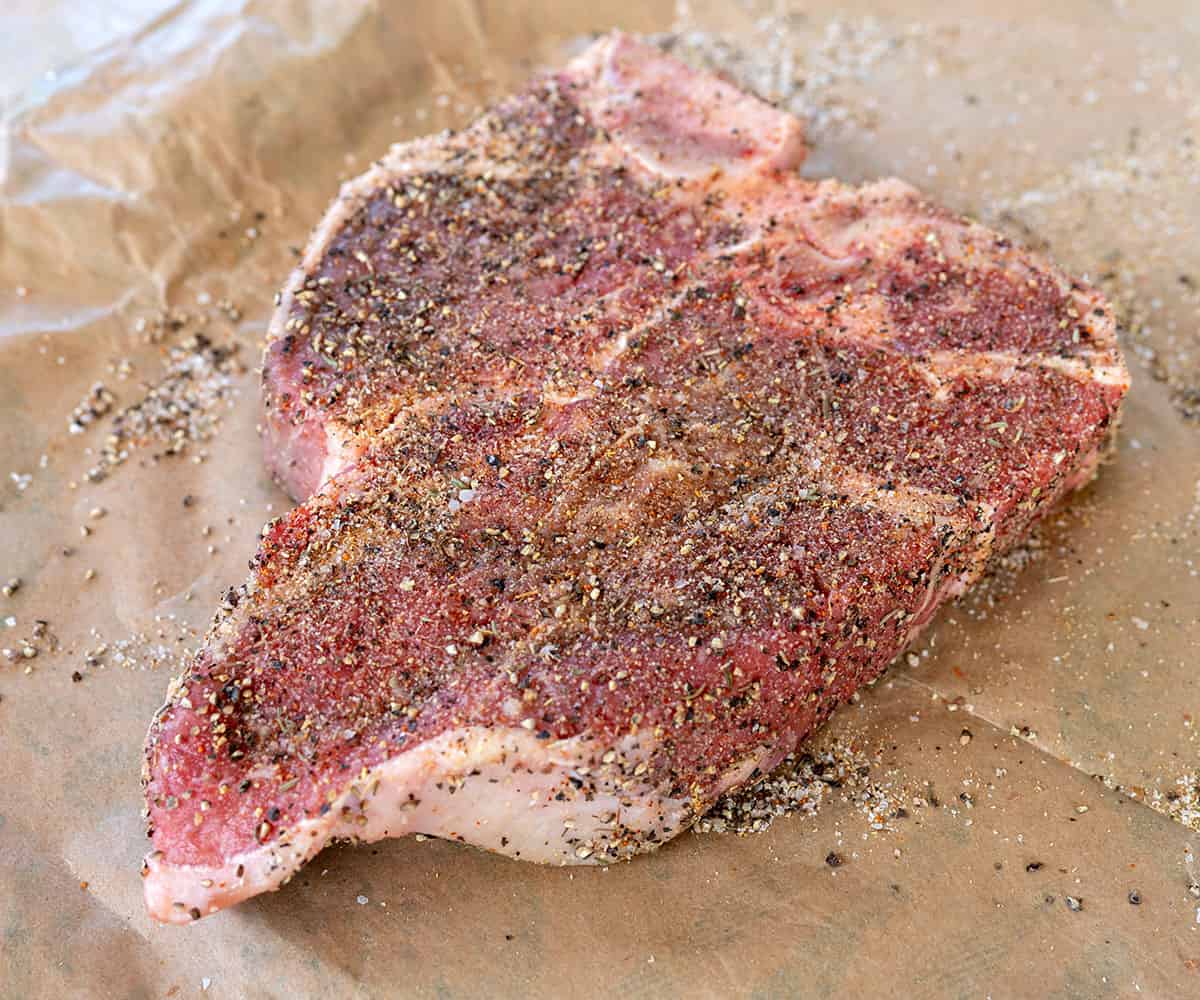
Some porterhouse steak recipes tell you to season the steak and let it get to room temperature. Well not this one. You actually want your steak to be as cold as possible, so it can spend more time absorbing the next layer of flavor – the smoke.
Season each steak with about two tablespoons of rub. Be sure to hit both the top, bottom and the sides of the steak. I usually rub the sides in any seasoning that lands on the pan or paper.
Then, press it all in with your hands and place the steak uncovered in the fridge while you heat your grill.
Grilling a Porterhouse
This recipe uses the reverse sear porterhouse technique, which will allow us to get some of that Cowboy hardwood charcoal flavor before creating an amazing crust.
Set your grill up with an indirect heat zone and a direct heat zone. This means that you’ll have burning coals on one side and no coals on the other side.
How to light a charcoal grill: Fill your charcoal chimney with Cowboy Charcoal hardwood briquets. Place some crumpled paper under the chimney and light it. Once the coals start to ash over and turn gray around the edges, put on a heat glove and dump the coals into the grill onto the bottom grill grate. Add a few more coals on top and add the cooking grill grate on top. Adjust your vents and start grilling.
When adjusting your vents, you want the indirect heat side of the grill to be about 225-250F degrees. This is where you are going to smoke your steak.
When the grill is ready, place the cold, seasoned porterhouse steak on the grill and insert a meat thermometer to gauge the temperature.
On the other side of the grill, where the coals are burning, place the cast iron skillet on the grate, but do not add anything to the pan. Close the lid.
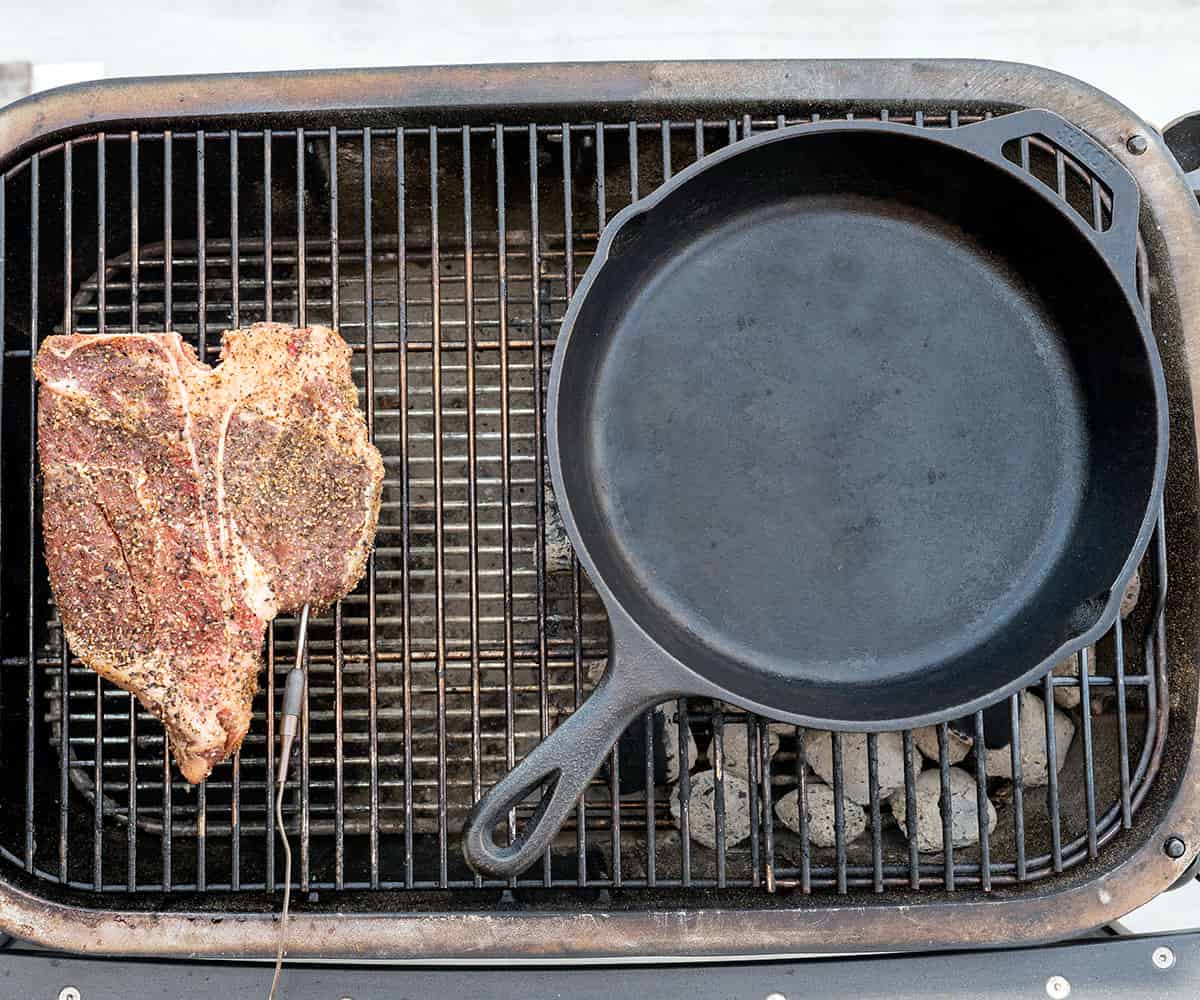
Watch the meat thermometer as the steak smokes. Once it reaches 85-90F degrees, remove the steak from the grill. This will take about 15 minutes, depending on how cold your steak was when you added it to the grill.
How to Cook a Porterhouse Steak on a Gas Grill
You can follow this same cooking method on a gas grill; however, you won’t get as much smoke flavor. If you have a 3-burner grill, turn one burner to medium to medium-high heat and leave the other burners off.
To accomodate for the lack of charcoal, use a foil pouch loaded with Cowboy wood chips or pellets. Then, place the steaks over the indirect heat side of the grill and place the skillet over the burner that’s on, which is the hottest part of the grill.
How to Cook a Porterhouse Steak on a Pellet Grill
To cook a porterhouse steak on a pellet grill, load your pellet grill with Cowboy pellets and set the temperature to 225-250F degrees.
Add the steak to the grill and smoke it until it reaches an internal temperature of 85-90F degrees.
To finish the steak in the skillet, crank the grill heat to 400F degrees, or finish in the cast iron skillet on a stove top.
How to Cook a Porterhouse Steak on a Ninja Grill
Set your Ninja Grill to the grill function with a temperature set to low. Allow the steak to cook slowly to 85-90F degrees.
Remove the steak and add the griddle grate. Change the function to GRIDDLE with a temperature set to high and follow the remaining cooking steps.
The Secret to a Perfect Grilled Porterhouse Steak
Now that your steak is seasoned and smoked, it’s time to get fancy. This is the part I picked up from Bobby Flay several years ago.
With his cooking method, he cooks the steak entirely in the cast iron skillet. But I like the added kiss of smoke, which is why this porterhouse steak recipe uses the reverse sear method.
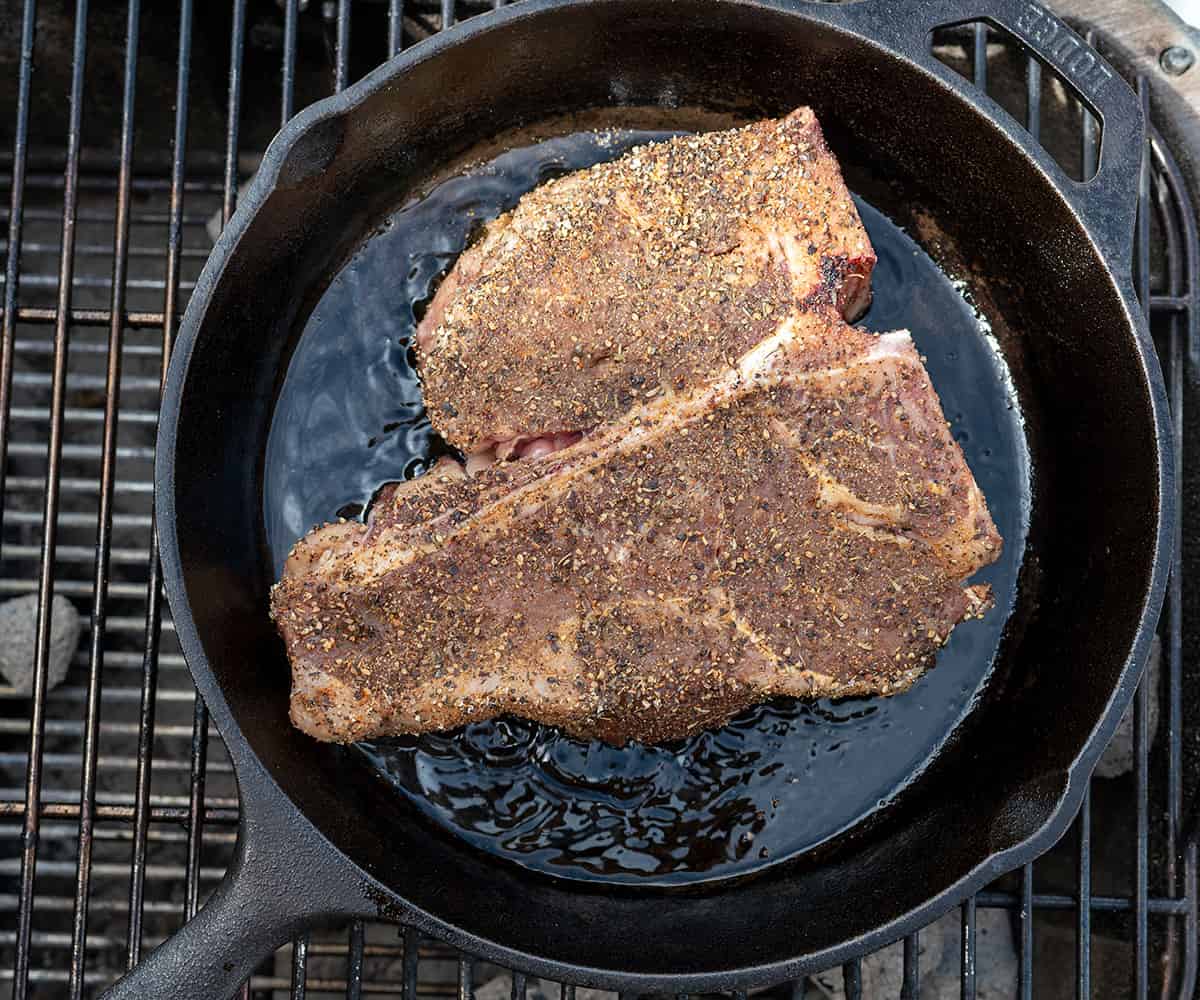
While the steak has been smoking, the cast iron skillet was heating up. As the steak starts to reach it’s 85-90F target temp, add a couple tablespoons of vegetable oil to the skillet and allow it to heat up.
You want the pan and oil to be about 400-450F degrees. That’s a sear tip I picked up from GirlCarnivore.com.
The safest and most accurate way to measure the heat is by using an IR Gun from Thermoworks.
Once the pan is ready, carefully add the steak to the pan and cook it for 2-3 minutes. The purpose of this stage is to develop an amazing crust.
How to Slice a Porterhouse Steak
Check out that crust that we developed. That’s flavor right there. Remove it from the pan and transfer it to a cutting board. Let the steak rest for five minutes.

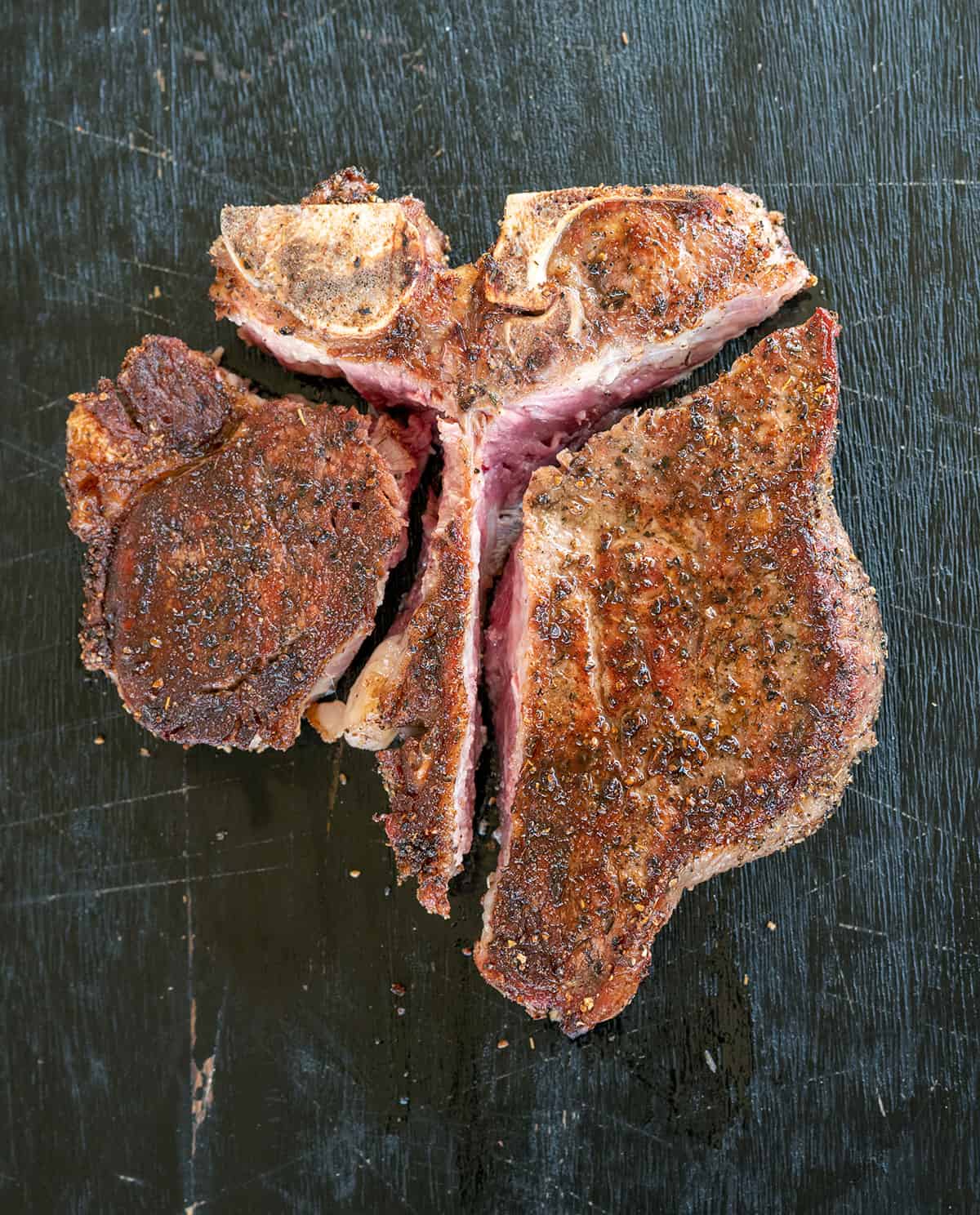
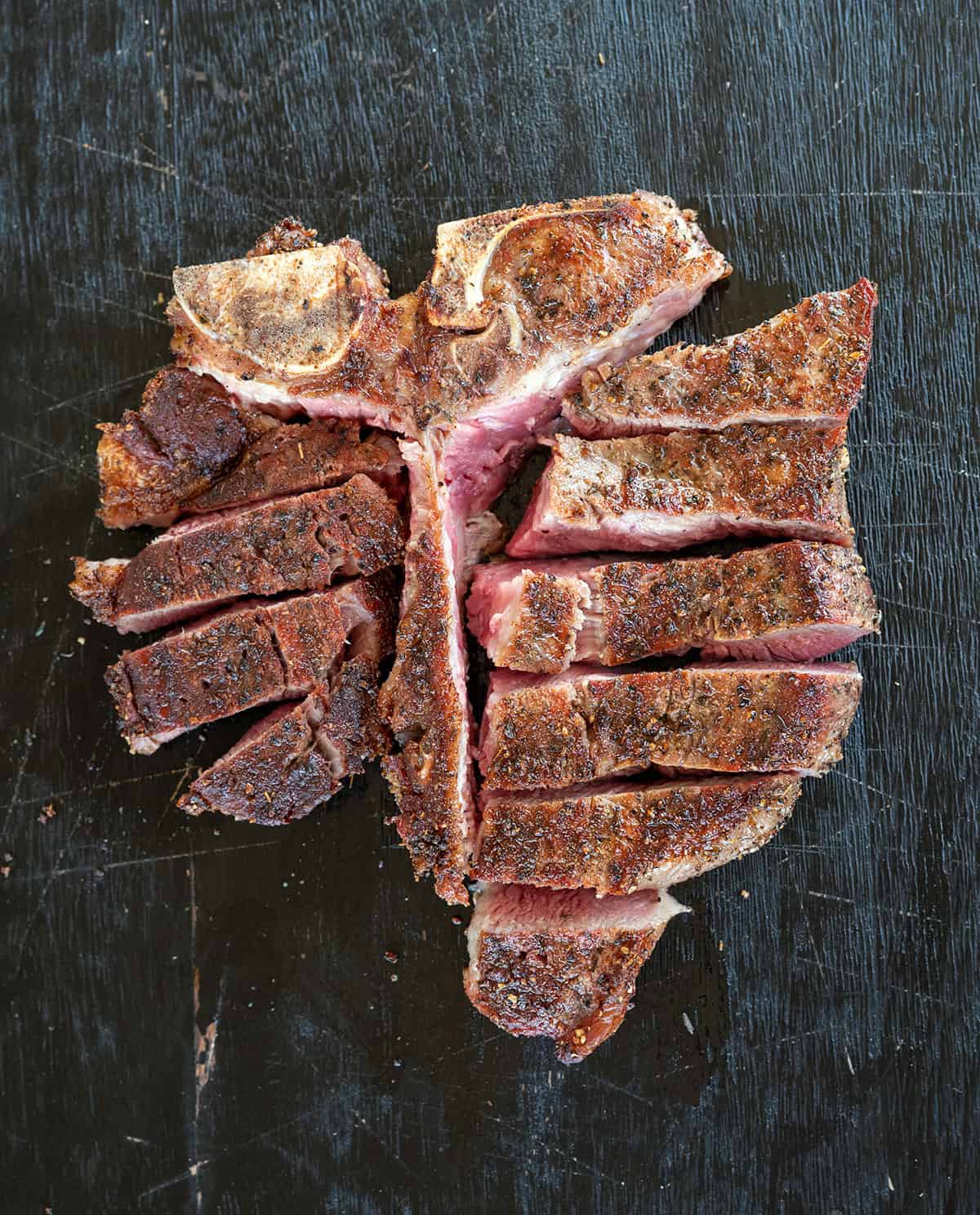
At this point, the steak has an internal temperature of about 100F degrees. It’s not quite done.
Once it has rested for 5 minutes, you’ll slice it and return it to the skillet to finish cooking.
To slice the porterhouse, run a sharp knife along the T-bone to remove the filet (pictured left) and the strip steak (pictured right).
Then, slice each of those steaks into one-inch pieces.
How to Finish a Porterhouse Steak
This porterhouse has seasoning, smoke and a beautiful sear. Now, it’s time to add the fourth and final layer of flavor – butter.
But not just any butter. This is a compound butter made with fresh minced garlic cloves, ancho chile pepper, fresh herbs and salt.
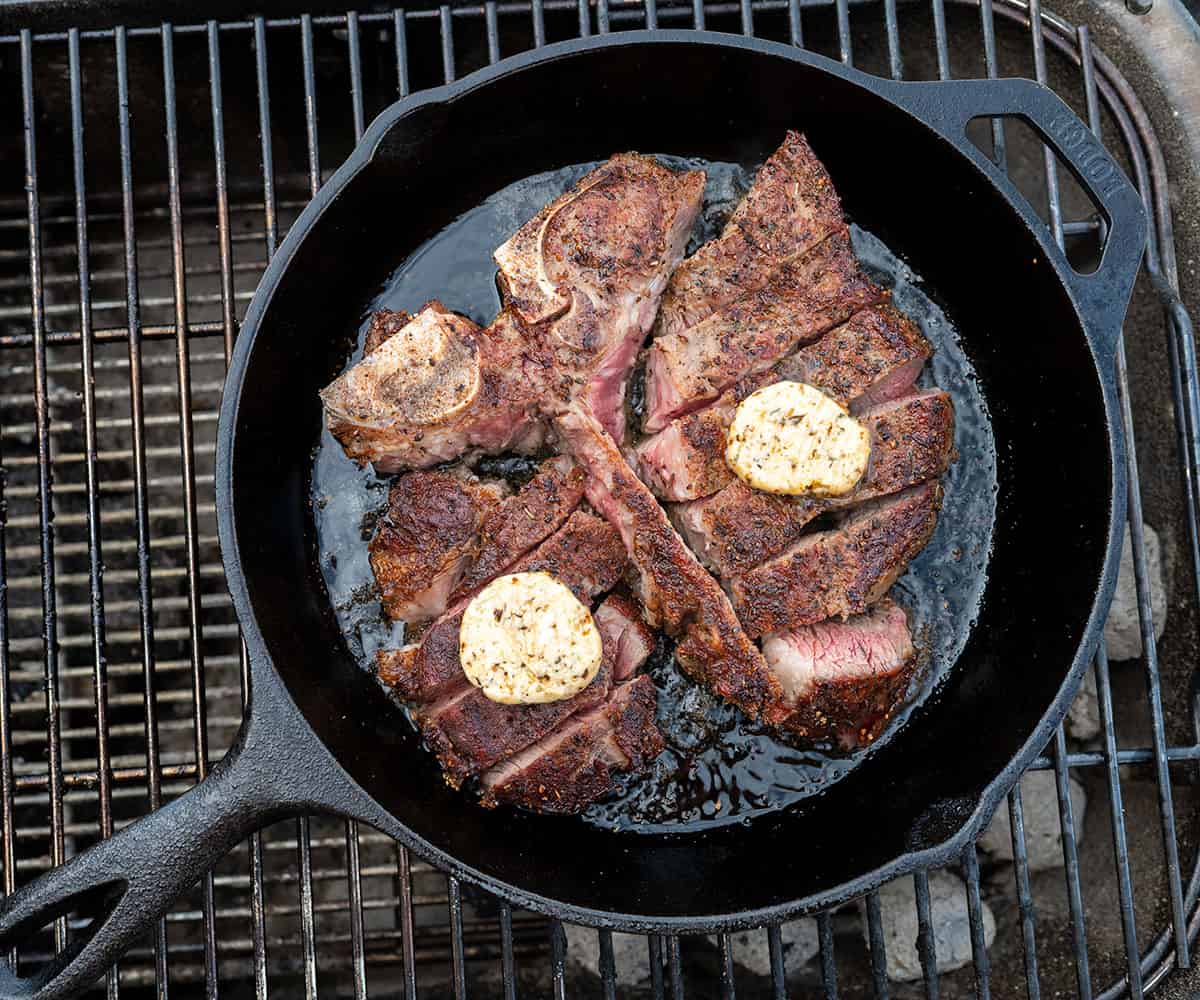
After slicing the steak, place it back in the hot skillet with the sear facing up. Try to keep it in tact, so the puzzle still looks like a porterhouse steak.
Then, add at least two slices of that garlic herb butter on top and continue cooking the steak to your preferred doneness. If you like medium rare porterhouse steak, this step will happen fast.
Remember, before adding the sliced steak back to the skillet, it will be around 100-105F degrees. This means, it only needs to rise another 20 degrees or so, which will happen super fast in a 400-degree skillet.
Steak Doneness Guide
Use an instant read meat thermometer to check the doneness, or use a fork to peek at the slices. The more pink they are, the more rare the steak is.
You can also press down in the center of the steak. The more it gives, the more rare it is. The more resistance it has, the more well it is.
When you remove the pan from the grill, it will continue to cook both from the heat within the steak and the hot skillet. To account for that carryover for the final temperature, I remove it when the temp is 5 degrees lower than the standard below doneness scale.
Medium Rare = 130-135F
Medium = 140-145F
Medium Well = 145-150F
Well Done = 160F+

When it’s time to serve the steak, transfer the whole pan to the table. You can garnish with a bit of fresh herbs and sea salt for a spectacular presentation. Just be sure to warn people that the skillet is hot.
GCG Pro Pitmaster Tips
- Season your porterhouse steak liberally
- Keep the steak refrigerated before smoking to get the most smoke flavor
- Measure your temperatures at each stage to ensure perfect doneness
- Make sure your cast iron is very hot
Frequently Asked Questions
Each steak will weigh about 1 1/2 pounds, which includes the bone. This amount of steak will serve two people.
Yes. A T-bone steak is required to have a tenderloin steak that is at least .5 inches wide. All porterhouse steaks are required to have a tenderloin that is at least 1.25 inches wide. Therefore, a porterhouse does fit the requirements to be a tenderloin. But not all tenderloins meet the requirements to be classified as a porterhouse.
A porterhouse is made up of both the strip loin and tenderloin. The strip loin is where New York Strips come from. When cooked properly and sliced against the grain, the strip steak is a nice steak, but not quite as tender as a ribeye. The tenderloin side of the porterhouse is a filet. This filet is an extremely tender steak.

More Steak Recipes
Want even more great grilling recipes and tips? Subscribe to my newsletter and follow me on Facebook, Instagram and TikTok for my latest grilling adventures. If you make a recipe, please leave a comment and rating below.
Save this BBQ Tip
Enter your email, and I’ll send this link directly to your inbox. Plus, you’ll get new BBQ recipes and tips weekly.
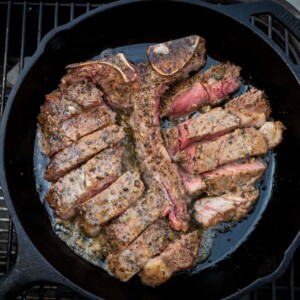
Grilled Porterhouse Steak
Equipment
- Cowboy Charcoal Harwood Briquets
Ingredients
- 1 porterhouse steak, 1 1/2 inches thick
- 2 tbsp steak rub
- 2 tbsp vegetable oil
- 2 pats ancho garlic compound butter
Instructions
- Season: Season the steak evenly with the steak seasoning. Press the seasoning on with your hands and be sure to get it on the sides. Place it in the refrigerator while you heat the grill.
- Heat Grill: Fill a charcoal chimney with Cowboy Charcoal Hardwood Briquets and light a fire underneath it. Once the coals ash over, dump them into one side of the grill. Add the grill grate on top. Place a 12-inch cast iron skillet on the grate over the coals. (see above for other grill setups)
- Smoke: Place the seasoned steak over the side of the grill where there are no coals. Smoke the steak until it reaches an internal temperature of 85-90F degrees. This will take about 15 minutes. Remove it from the grill.
- Sear: Add the vegetable oil to the skillet. Once it reaches 400F degrees, add the steak. Cook for 2-3 minutes, until a crust forms. Remove the steak from the grill.
- Slice: Let the steak rest for 5 minutes. At this point, it will be around 100F degrees. Slice the strip and filet from the T-bone and then slice each steak into one-inch pieces (see photos above).
- Finish: Place the steak and bone back into the skillet with the seared side facing up. Try to reassemble it so it looks like a whole steak. Add a slice of compound butter over each sliced steak. Continue cooking to your preferred doneness. Medium rare will only take a couple of minutes.
- Serve: Remove the skillet from the grill and place it on a hot pad. For cool presentation serve it straight from the pan, but warn your guests that the skillet is hot.
Notes
Nutrition
Nutrition information is automatically calculated, so should only be used as an approximation.

